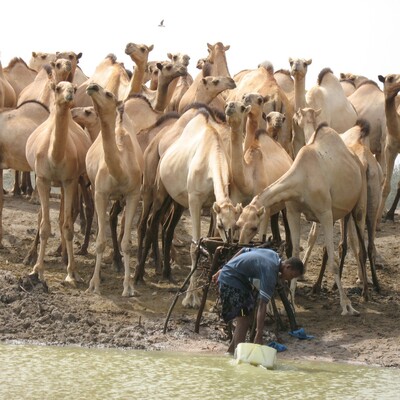
Effect of supplementing oat hay with lablab, sesbania, tagasaste or wheat middlings on voluntary intake, N utilization and weight gain of Ethiopian Menz sheep
Abstract
This study investigated the effect of feeding oats hay alone or with 250 g of dolichos lablab (Lablab purpureus, 50 percent flowering at harvest) hay, wheat middlings, leaves of sesbania (Sesbania sesban) or tagasaste (Chamaecytisus palmensis) on the growth of 66 Ethiopian Menz sheep and the nutrient metabolism of five sheep from each treatment. One other dietary treatment was oats straw supplemented with lablab. Sheep on the hay-lablab diet, compared with the straw-lablab diet, had higher intake, growth rate, digestibilities of DM, OM and microbial N supply, but both diets had similar N retention. Intake of oats hay tended to be depressed by supplementation, but the depression was more pronounced with lablab and tagasaste. Supplementation increased total intake of DM, body weight (BW) gain, but not microbial N supply. The results were discussed in relation to, and supported, the hypothesis that variation in the performance of animals given leguminous supplements may partly be ascribed to how quickly the supplement disappears from the rumen. Oat hay is a better feed than oat straw and alone could mitigate BW losses of sheep.
Citation
Small Ruminant Research;18(2): 113-120










